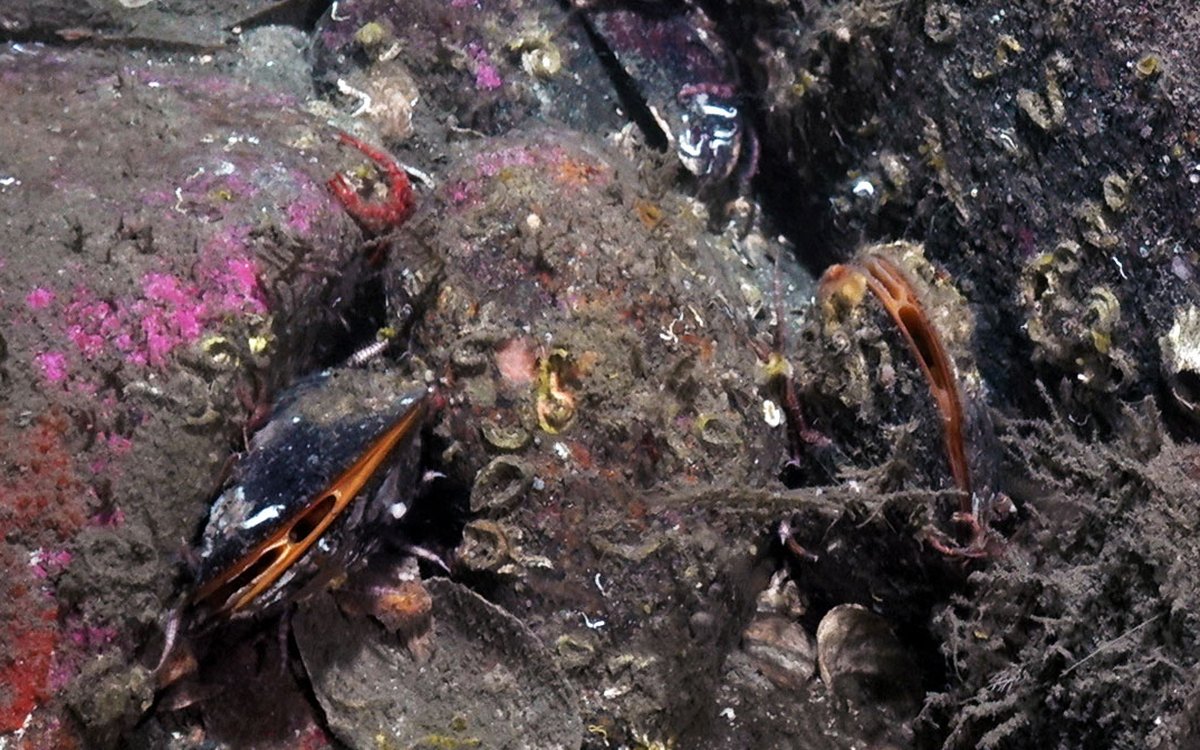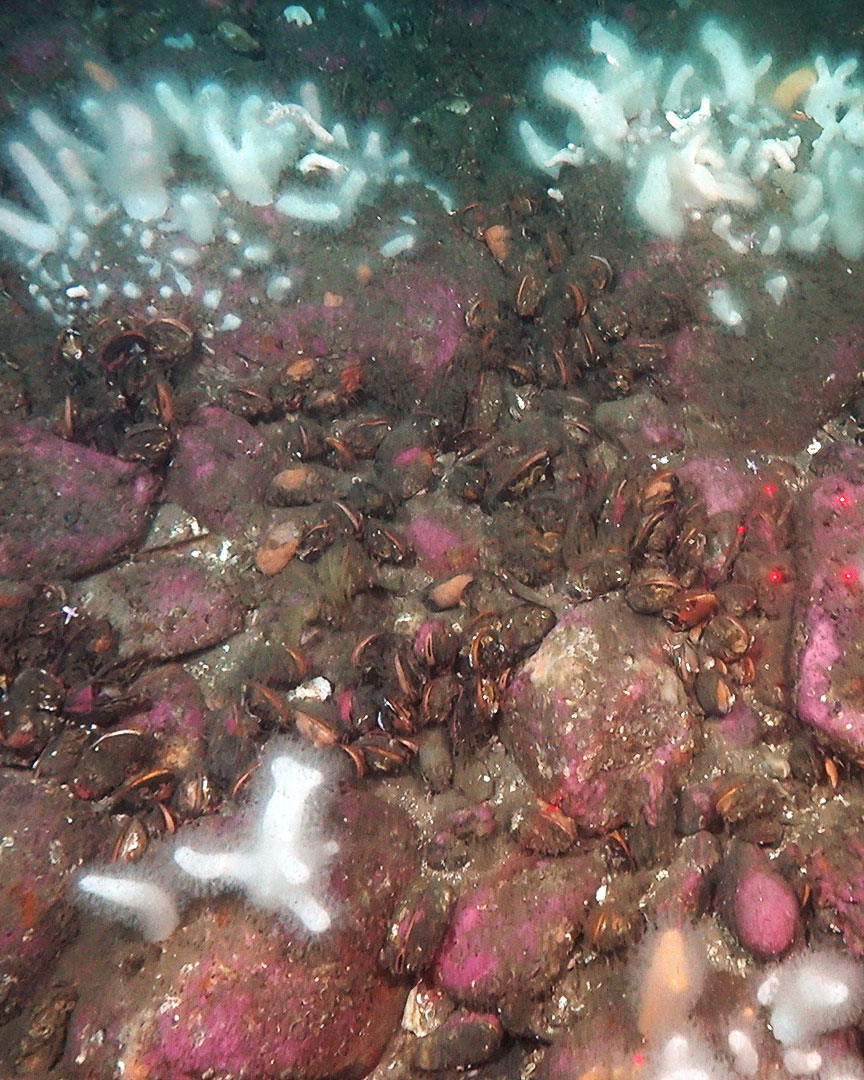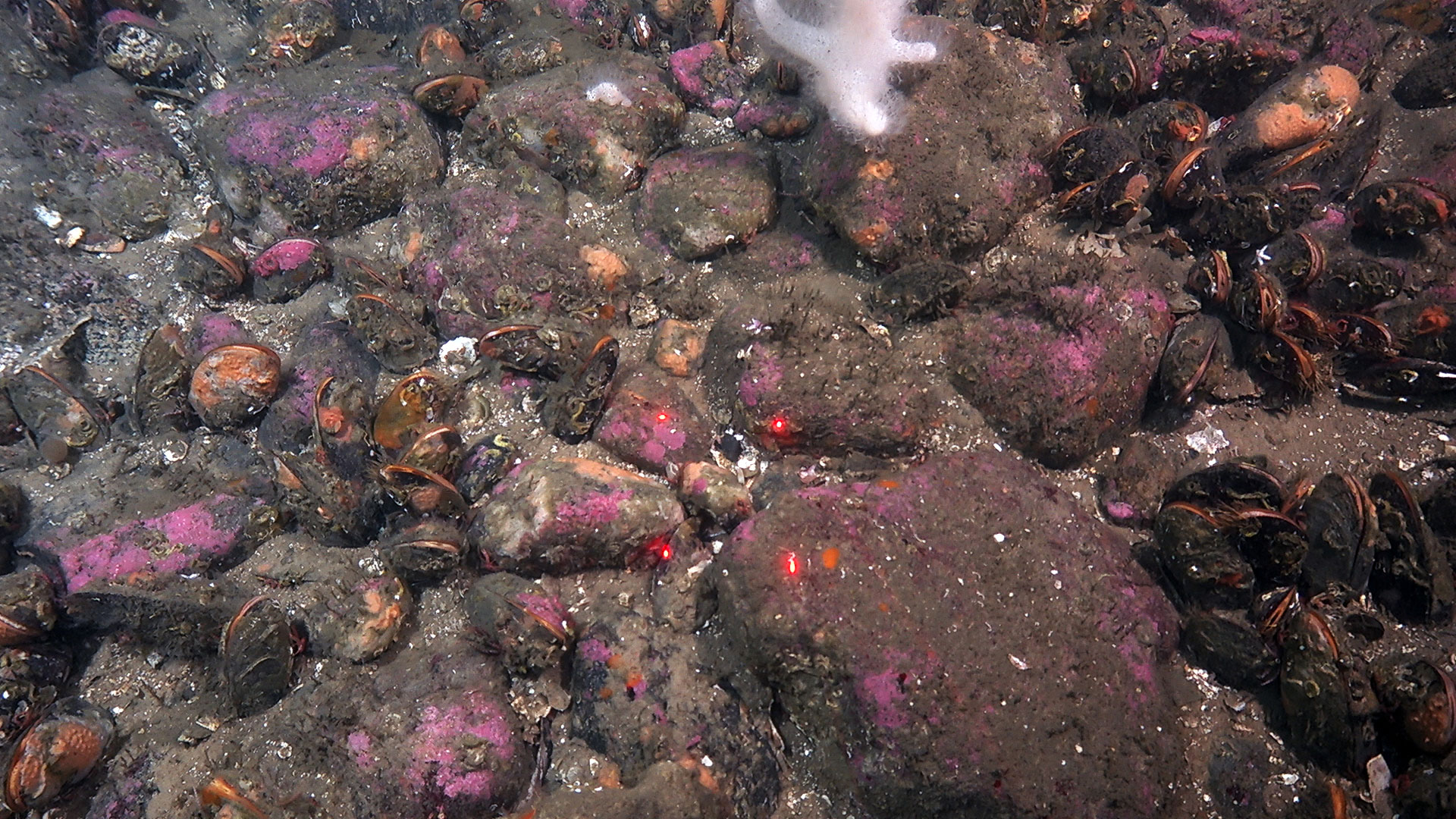
The horse mussel (Modiolus modiolus) is a bivalve mollusc that can grow up to 14.7 cm in size and live up to 25 years.

The horse mussel (Modiolus modiolus) is a bivalve mollusc that can grow up to 14.7 cm in size and live up to 25 years.
Published: 02.07.2025 Updated: 03.07.2025
The Chimaera is going into the water. As it descends into the blue, Anne calls the bridge via radio to start a new video station. Jossan and I are ready to annotate the video transect we’re about to begin. The video-rig lands on the seafloor like a spaceship touching down on another planet, lifting a cloud of sediment that momentarily obscures our view.
As the stirred-up sediment begins to settle, we scan the area with the camera—and off we go! Anne shouts, “Take off!” The Chimaera begins drifting along the seafloor, and we start annotating (identifying and counting) all living creatures we see.
Some “dead man’s fingers” — the soft coral Alcyonium digitatum — appear now and then on scattered boulders and cobbles. We've seen quite a lot of them in previous video transects in this part of the North Sea. In fact, they seem to form quite dense patches here.

After a few more interesting sightings, we notice some large bivalves, half-buried in the sediment between the cobbles and boulders. First five, then ten more— then twenty! Suddenly, we’re counting them fifty at a time. They're everywhere! I can barely keep up.
We've come across a Modiolus bed!

This species of bivalve, Modiolus modiolus — commonly known as the “horse mussel” — is a long-lived mollusc that grows half-buried in sediment, often forming dense aggregations. They attach to one another and to the substrate with strong byssal threads. These mussels are considered a biogenic species, meaning they create complex habitats for other organisms and help stabilize sediments against erosion. Populations of Modiolus attract a wide variety of zoobenthic species, facilitating diverse biotic relationships between its inhabitants. In fact, mortality rates from predation on associated benthic species are estimated to be higher outside than inside of Modiolus beds.
Horse mussels are filter feeders and therefore they are an important link in the marine carbon cycle and pelagic-benthic interactions. Their reproduction includes a pelagic larval stage which means that, on a seasonal basis, they contribute to the planktonic communities as well. Once they recruit and settle, juvenile Modiolus are heavily preyed upon by crabs and starfish, but as they grow, they become less vulnerable to predation.

This long-lived species can reach 25 years of age or more, with some individuals reported to be up to 48 years old and measuring an impressive 14.7 cm! The meat of the mussels is edible and tasty, but due to slow growth and difficulties in artificial reproduction there is no farming industry around them.
To some extent, horse mussels are resistant to natural variability of environmental conditions, as well as to some levels of pollution. Therefore, their presence maintains the local environment in a healthy state, improving general stability of the ecosystem.
However, the fact that the horse mussel is a slow-growing taxon, with infrequent and sometimes unsuccessful recruitment, makes it particularly vulnerable to human activities. Trawling, dredging, and the installation of marine infrastructure pose significant threats to these habitats, with uncertain consequences for their resilience and recovery, which could take tens of years after disturbance.
Although Modiolus is a widespread and relatively common species, large aggregations forming beds — like the ones here in the North Sea — are much more limited in distribution. These beds are often patchy, making it difficult to predict where they occur, define their boundaries, or measure their full extent.

For all these reasons, Modiolus beds have been listed by the OSPAR Commission as Marine Vulnerable Ecosystems (VMEs) — a designation that should help ensure their protection. Hopefully, maps produced through the effort of MAREANO scientists will help to identify and delineate these important habitats, contributing to effective management.
And so, the search goes on…